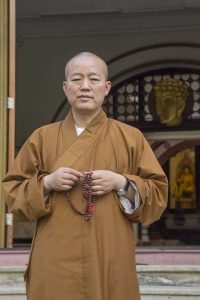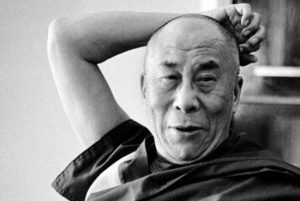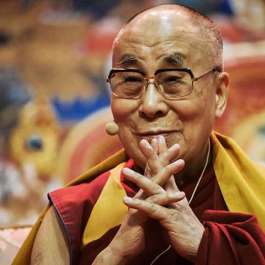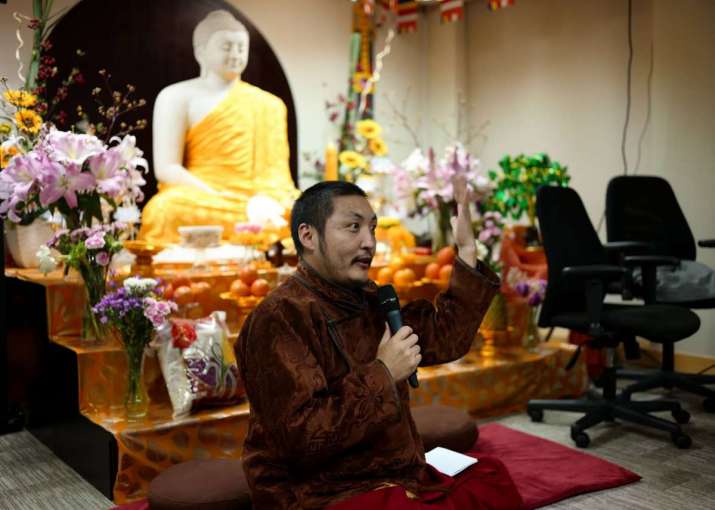
Although Buddhism has watched over Mongolia since the Yuan dynasty (1271–1368), it was as if entire aspects of Mongolian life were “reset” in 1990: the Soviet Union rapidly dissolved, and formerly communist Mongolia came to uncertain grips with its new political configuration as a post-Cold War democratic state. Buddhist practice that had been driven underground was thrust back into daily life as part of a nation-wide project for cultural preservation, while foreign spiritual movements hungry to harvest spiritually lost converts flooded into the country. It is in this context that Baasansuren Khadsuren is providing the kind of spiritual weal that will ensure Buddhism’s capability to authentically benefit followers in Mongolia, while helping them to see that Buddhism is not just a repository of rituals, blessings, and cultural identity, but can also be a vehicle for personal development.
Baasansuren Khadsuren is extraordinary for the reason that despite his young age, he is one of the most senior leaders among the Mongolian Buddhist community: he is an abbot (khambo lama) of Erdene Zuu, the most ancient monastery in the country (founded in 1585). As if by deliberate contrast, he is also the most instinctively reformist Mongolian Buddhist leader in decades, and is somewhat of what I would call a “pastoral polymath”—a frequent user of social media and the Internet for keeping in touch with his followers, deeply concerned about the marginalized, shunned, and voiceless in his society, and so possessed by a deep love of his people that he is not afraid to offer concrete advice that might challenge long-held assumptions in Mongolian social, cultural, and domestic life. He is also interested in interfaith studies, having done personal research on the other religious traditions growing in Mongolia.
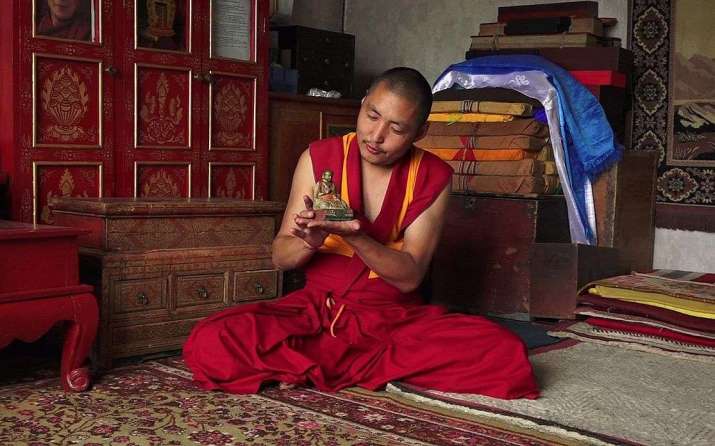
Baasansuren Khadsuren was born in 1977 in the fabled area of Kharakhorum, where the ruins of Genghis Khan and Ögedei Khan’s city lie. He grew up, like many other Mongolian children, with a secret basement in the household where his grandfather would store Buddhist scriptures and secretly practice. In 1988, he visited a former monastery that had been converted into a museum, and was deeply affected by the sight of the interior’s Buddhist paraphernalia. The devotion that stirred in him was so strong that he became a monk in 1991, at the age of 13. He spent four years memorizing texts, and then became a master of chanting at the age of 18. He graduated from Zanabazar Buddhist University at Gandan Monastery in Ulaanbaatar in 2000. By the time he had become abbot of Erdene Zuu, he knew that the time was ripe for institutional change, and that he would have an important role to fulfill in this change.
As a monk active in the community, he is mindful of Mongolia’s political problems and the disenchantment of many citizens by the government’s corruption. His message is one of empowerment, leaving behind negativity and cultivating inner contentment, spiritual discernment, and authenticity. Indeed, he observes of the trends of materialism and emptiness in society: “You can only become truly rich when you are non-attached.”
Apart from being the first Mongolian lama with a Facebook page and being an environmental advocate, he is also famous for his melodious voice, which he has used in his Dharma talks to encourage listeners to sing along to “Om Mani Padme Hum,” and in public performances of Mongolian mantras and songs. He is, alongside accomplished practitioners like Kunze Chimed, one of the few serious yogis in the country with a comprehensive knowledge of chakras and meditation techniques.
“I want to be accessible to people,” he says. “I like to ask what difficulties they have in their daily lives through email and social media.” His students seem to find this channel (Facebook), commonplace though it might be today, extremely useful when it comes to communicating with such a senior lama. Baasansuren Khadsuren also organizes monthly or bi-monthly social events for people with physical and psychological difficulties featuring dance and music. “We are too used to bottling up mental illness or other handicaps and not sharing it with others who might be able to provide help and comfort,” he says. “I would like to gradually change that mindset.”
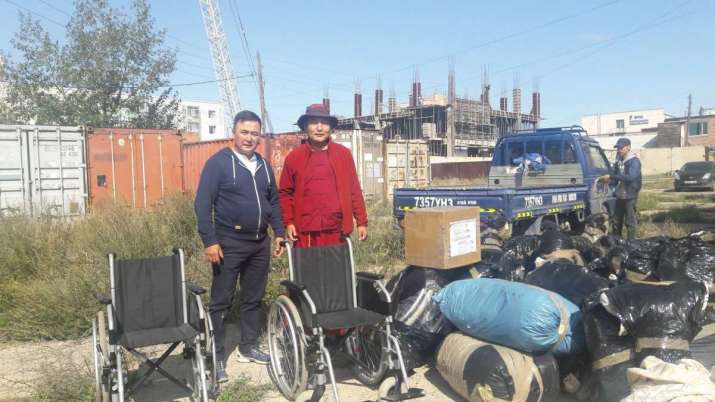
Mongolian Buddhist scholar and professor of religious studies at UC Santa Barbara Vesna Wallace, who has known Lama for almost two decades, agrees with him, noting that a significant shift of demographics has taken place over the past decade or so, with a rising number of students and young professionals being attracted to his vision of Buddhist practice. It is essentially a recalibration of the monastic-lay relationship, a new way for monks to relate to the rest of society by contributing to the improvement of the people’s psychological wellbeing. “Superstition and rituals are not the heart of Buddhism,” Baasansuren Khadsuren says. “With so much upheaval and difficulties in the past few decades, the monasteries and laypeople have become disconnected. I hope to bridge that gap through social and environmental concerns.”
So far, he has received support from many urban monasteries. The rural monasteries seem more cautious and conservative about his style and priorities, but he is tremendously—and perhaps rightly—confident, that he has seized upon the needs of the present Mongolia, and captured the attention and energy of people who are hungry for authentic spirituality in the midst of civil difficulties and government failure, which were not only remnants of the Soviet era but remain endemic issues today.
“We need to honestly ask ourselves what we would like our purpose in life to be. I like to talk about the mind to heart journey. If people always follow their minds, suffering will be inevitable. The heart always says the right things and tells the truth. I would like to advise people to always follow their heart,” he says. “The heart is never wrong.”
See more



